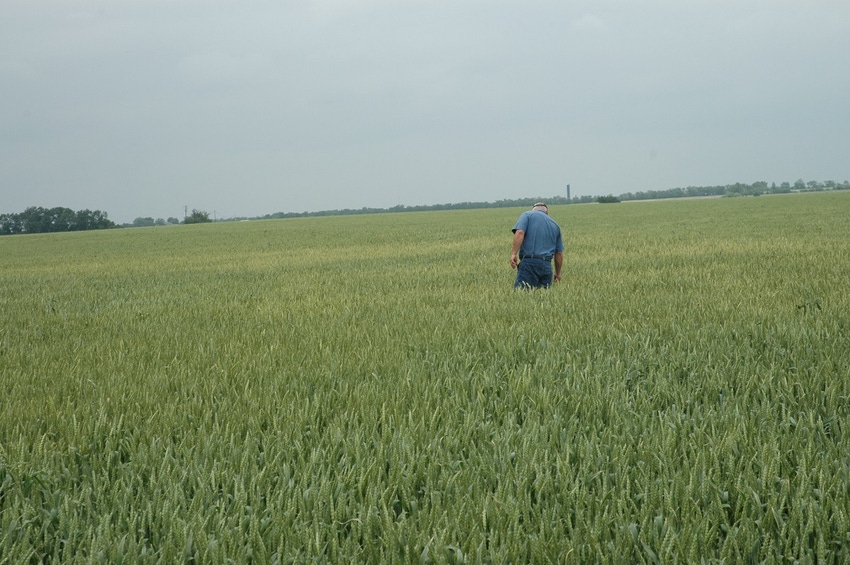March 18, 2015

The KC May wheat contract price bottomed out at $5.16 on March 5. By March 16, the March contract price had increased to $5.55 (39 cents). Is this price rally a “spring price rally,” or is it due to a decrease in the index of the U.S. dollar relative to other major currencies, reported freeze damage to hard red winter wheat, a reduction in yield expectations, or the funds getting out of short (sold) contract positions?
The index of the U.S. dollar (value of the U.S. dollar compared to other major currencies) has been described as the “elephant in the room.” Between June 2014 and now, the dollar index has increased about 25 percent. During the same period (June through March), Oklahoma and Texas wheat prices declined about 27 percent ($7.18 to $5.23).
Between March 5 and March 16, the KC May wheat contract price increased from $5.16 to $5.55, or 7.6 percent. During this same period, the dollar index increased from 96.958 to 99.925, or 2.89 percent. This increase would be equal to a 15-cent price decline. The dollar index is not the reason for the price rally.
Severe freeze damage was reported in northwestern Kansas wheat. Freeze damage in one area may indicate the possibility of damage in other areas (Kansas and Colorado), a reduction in expected production could have a positive influence on prices.
The KC (hard red winter) wheat contract price increased 39 cents and the CBT (soft red winter) wheat contract prices increased 32 cents. Perhaps seven cents (39 to 32) of the price rally can be attributed to freeze damage.
USDA’s Oklahoma Crop Weather report shows evidence of lower expected yields. The January 5 report indicated that 54 percent of Oklahoma’s wheat crop was in good to excellent condition, and 12 percent was in poor to very poor condition. In the March 9 report, only 40 percent of the wheat was classified as good to excellent and 16 percent was classified as poor to very poor.
Another indicator of potential yield problems is the U.S. Drought Monitor, which shows exceptional drought (worst category) conditions in northern Texas (Wichita Falls), and southwestern Oklahoma. Severe drought conditions extend northwest into the Texas panhandle and western Oklahoma. The drought appears to be expanding both to the east and north with moderate drought and abnormally dry conditions extending into western Arkansas and southern Nebraska.
Extreme drought conditions cover most of California’s wheat production areas. Intensifying and expanding drought conditions may be affecting yield expectations and prices.
A market report (Allendale, Inc.) indicates that market funds hold over 63,000 short (sold) wheat contracts. At some point, the funds will buy contracts to offset the short positions, which could result in higher prices.
A final factor is the weather projections for the next three months. Drought conditions are forecast to remain throughout the Texas Panhandle and the Wichita Falls, Texas area. Nearly everywhere else, Oklahoma (minus the Panhandle) and Kansas, drought conditions are projected to improve.
The 90-day forecast is for normal to cooler temperatures and above average to average rainfall. With the current drought and dry conditions, average rainfall will have to be timely to produce average yields.
The one thing for certain is that “spring has sprung” and prices have increased. The weather and the dollar index will determine price movements between now and harvest. Hopefully, the spring price rally will continue.
About the Author(s)
You May Also Like






